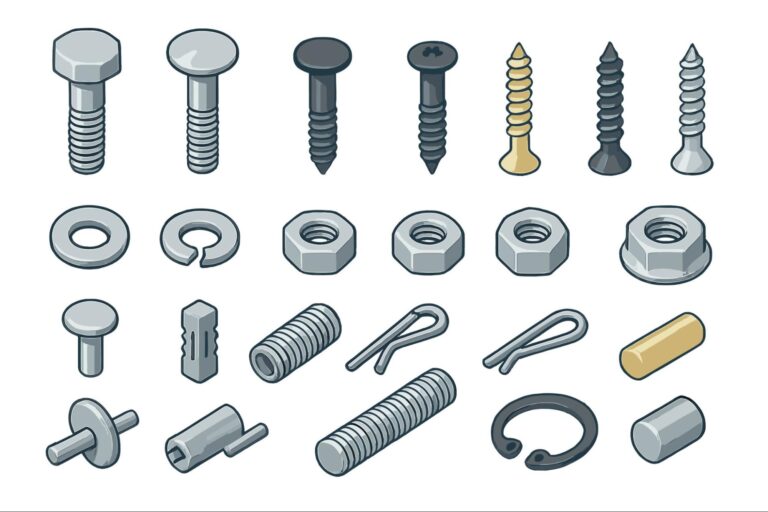Time to read: 6 min
CNC turning services offer a widespread technology for manufacturing cylindrical parts from various materials. Unlike CNC milling, CNC turning rotates the workpiece and introduces a stationary tool into the workpiece. Advanced CNC turning centers take this further by adding milling functionality to the machine to produce highly complex parts like those in the image below:
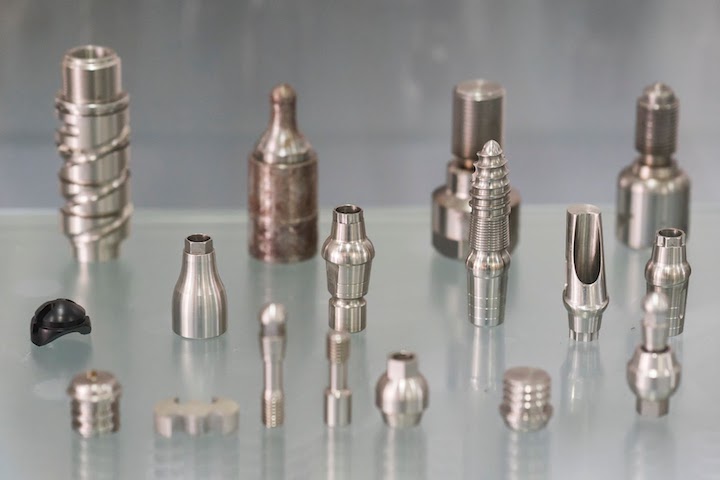
This article will provide a top-level introduction to the CNC lathe machine and will describe typical naming conventions, how CNC turning works, the types of operations available, and the various components of a CNC turning machine.
CNC Turning Explained
CNC turning is a subtractive manufacturing technology and refers to the process of removing material from a (typically) cylindrical stock piece of material — though CNC turning can also be performed on a wide range of stock shapes such as hex or square bar. The machine spins the workpiece while a tool moves to engage and remove material until the desired shape is achieved.
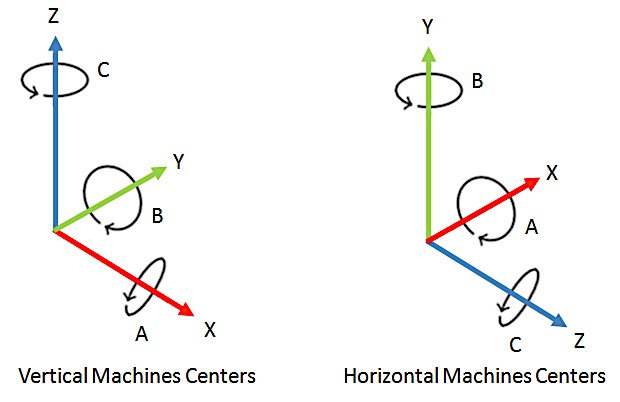
Turning machines can be vertical or horizontal, and the figure above shows the axes convention for vertical and horizontal machines (6 axes shown, although number of axes varies). Vertical CNC turning is typically used to machine large and heavy designs as the material’s center of gravity is aligned along the rotational axis.
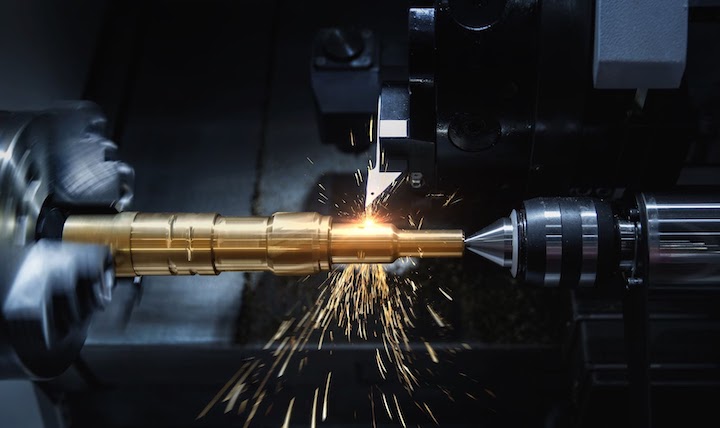
Horizontal CNC turning has the workpiece mounted in such a way as to cause a cantilever effect. That cantilever setup may cause vibration in large, heavy pieces which can affect the machining quality, and also cause potential damage to the turning machine and tooling.
Vertical turning has its own set of drawbacks, however. One drawback is chip evacuation: if cutting chips are not effectively evacuated after being cut, potential issues like chip recutting and part scratching can result. Therefore, horizontal CNC turning is the most common setup.
CNC Lathes vs. CNC Turning Centers
The difference between a CNC lathe and a CNC turning center can be simply expressed as a difference in their capabilities, with a turning center typically being capable of multiple operations while a lathe simply turns. A lathe is a machine designed to cut a rotating workpiece while turning refers to the rotational cutting process in general.
Before CNC technology, lathe machines were similar and easy to identify. However, with advancements in technology, many new features have been added. So, we need to differentiate between simpler CNC machines that perform operations like the original lathes, and enhanced machines (CNC turning centers) that can perform turning cuts in additional ways.
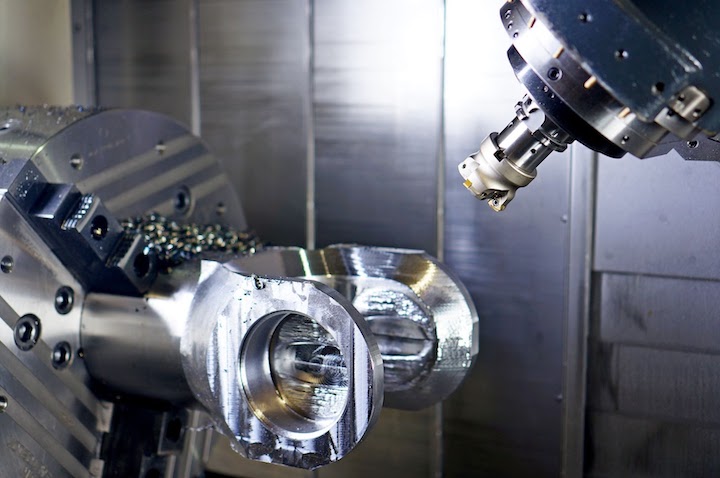
Some companies differentiate the two based on the number of toolpath axes the machine can execute. CNC toolpaths can be classified as 2D, 3D, 4-axis, or 5-axis (this applies to both milling and turning-cutting processes). Lathes generally are 2-axis machines, while turning centers are typically 3-axis, 4-axis, or 5-axis machines. Other companies refer to machines that can perform turning cuts as well as milling and drilling operations as turning centers.
CNC Turning Machine Components
Turning machines consist of a spindle attached at one end to the machine drive system, while the other end accepts the chuck that grips the workpiece to be cut. The chuck typically has three or four jaws, with three jaws being the most common. Four-jaw chucks can be used to grip square bar and also allow for off-center turning.
Cutting tools are often made of carbide inserts. Those inserts are mounted into tool holders, which are bolted to the turret using a variety of specialized holders, depending on the type of tool. Tools are then indexed as a part of the preparation before machining starts.
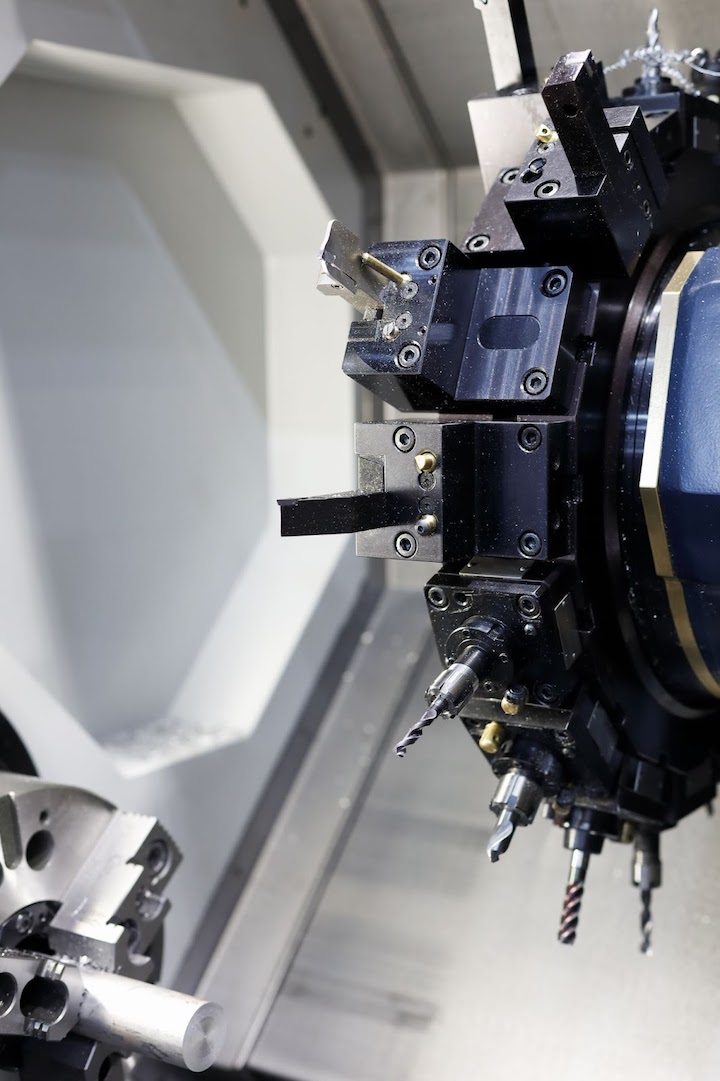
CNC Turning Tooling Materials
Several companies dedicate significant research efforts to designing better inserts, coatings, and alloys to increase tool life and performance. Because there are a variety of insert designs, selecting the insert that’s appropriate for the material being machined is crucial. Attempting to machine a hard material using a tool meant for softer materials — while using the same speed and feed values — can break the tool or damage the workpiece.
One key part of materials engineering for CNC turning tool inserts is crystal orientation. In magnified images taken through a microscope, the individual crystalline areas in the material, known as grains, can be analyzed. The structure, size, and orientation of these grains result from the material composition (alloy) and the way the material is made or modified by heat treatments and various other processes. These grain sizes and orientations are linked to mechanical properties.
A comparison between the microstructure of a typical alumina coating for CNC turning inserts and the microstructure achieved with a technology from Sandvik called Inveio® is shown in the figure below. The typical coating has a random crystal structure, while Sandvik’s technology results in unidirectional crystals. This change in the microstructure improves crater wear and flank wear resistance and results in improved heat transfer during machining. As such, a unidirectional crystal structure helps the cutting edge stay in shape longer, improves wear resistance and tool duration, and significantly reduces machining costs.
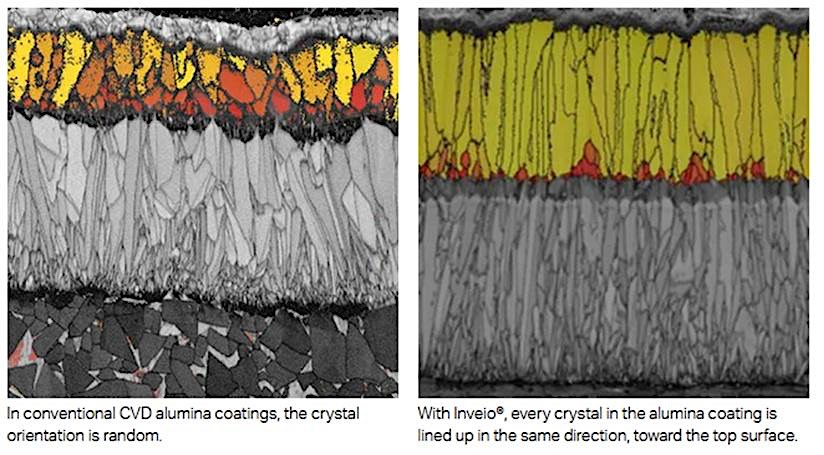
Speaking of microstructure, if you’re designing a CNC machined part and need to specify finishing operations, check out our quick reference ebook that walks you through your best options:
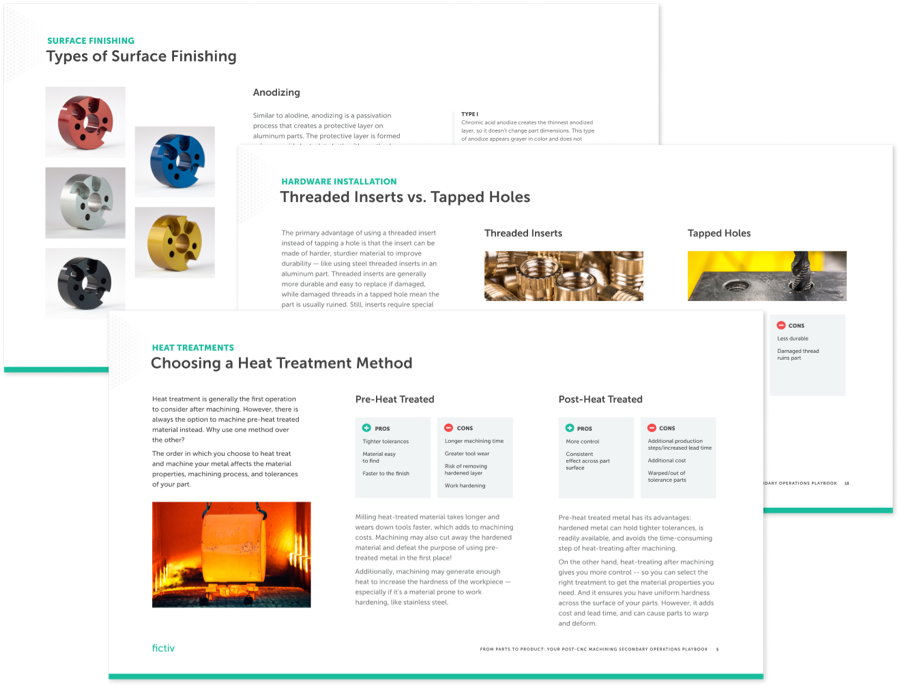
Types of CNC Turning Operations
Turning is a term used to describe a range of different operations that can be performed on a turning center. Listed below are some of the more common types of turning:
Facing
Face turning is the process used to cut a flat surface perpendicular to the workpiece’s rotational axis. The tool is mounted into a tool holder that rests on the carriage of the lathe. During the process, the facing tool will feed perpendicularly across the rotational axis of the part. Face turning can be performed as a roughing cut or as a final pass cut.
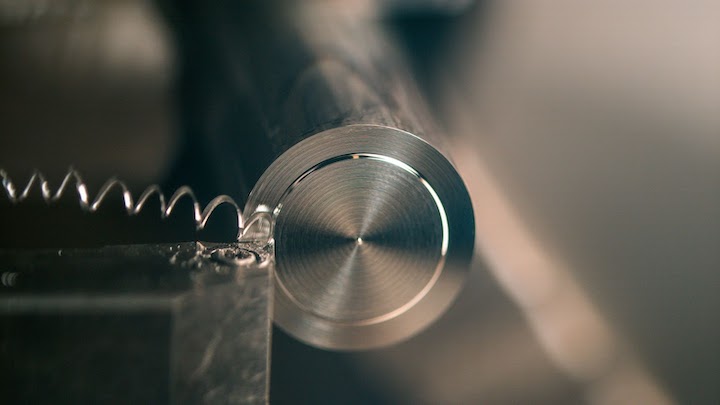
Turning
The CNC machine turning operation refers to removing material from the outer diameter of the workpiece. Turning can either be performed parallel to the rotational axis of the part or at an angle to create a tapered part.
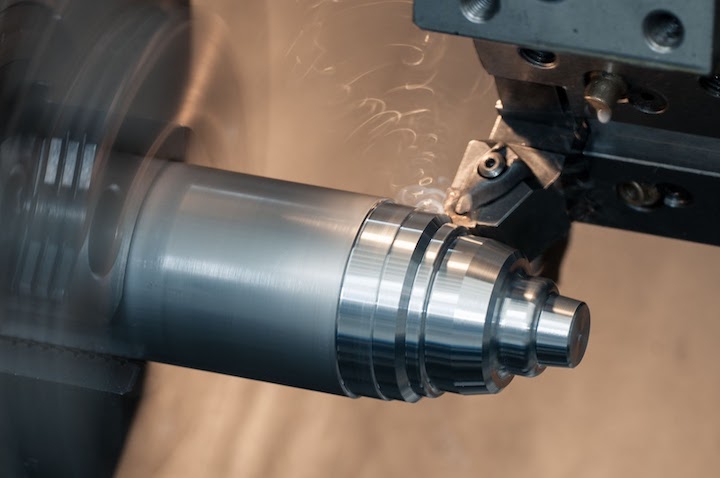
Drilling
If a hole is required on the rotational axis of the part, a drill is used. In more advanced turning centers, a hole can be drilled in almost any orientation and is not limited to the central axis.
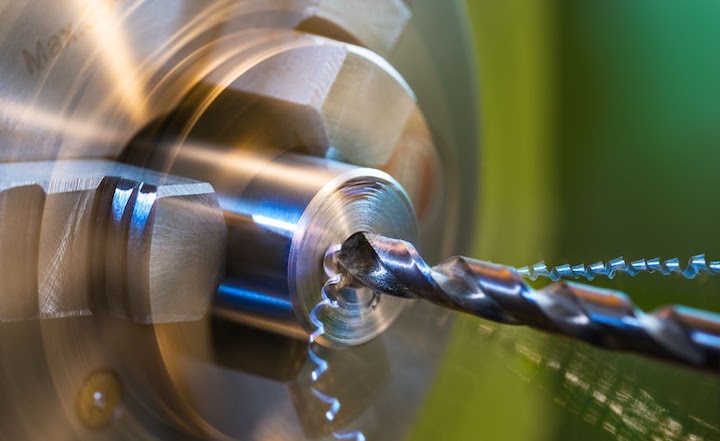
Boring
After a hole has been drilled it may be necessary to enlarge it. The easiest way to do this is through a boring operation where the cutting tool is fed into an existing hole and removes material from the inner wall of the hole.
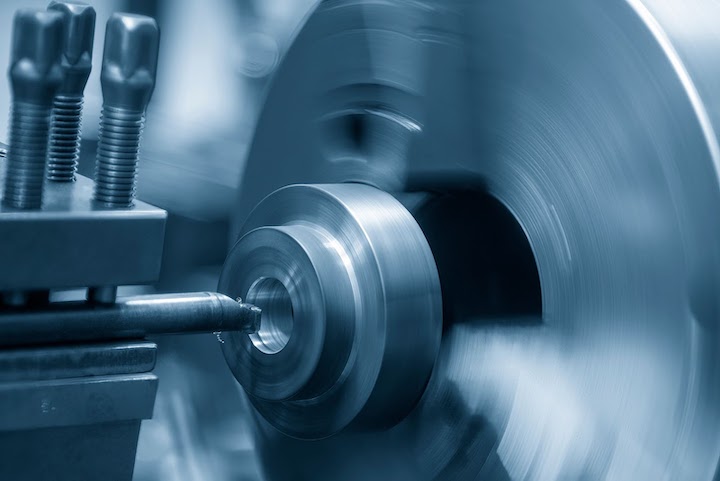
Threading
Threading is the process of cutting threads into a hole or over the outer diameter of a workpiece.
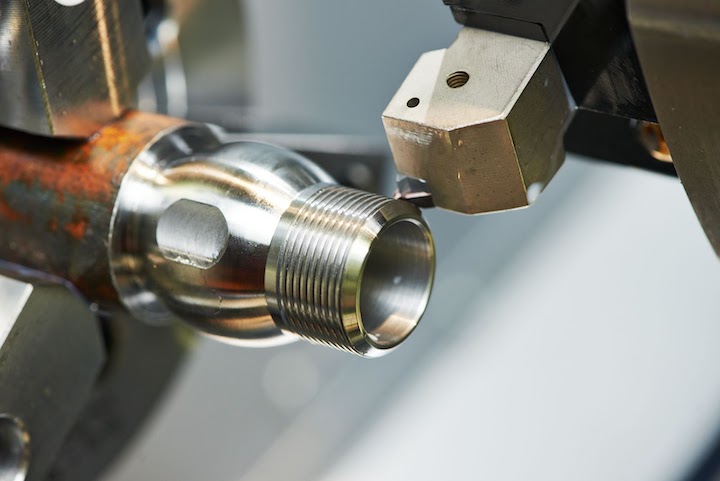
Grooving or Parting
Grooving is typically used to create features like O-ring or circlip grooves and contouring operations. A grooving tool is sometimes also called a parting-off tool and is used to remove the completed part from the workpiece stock.
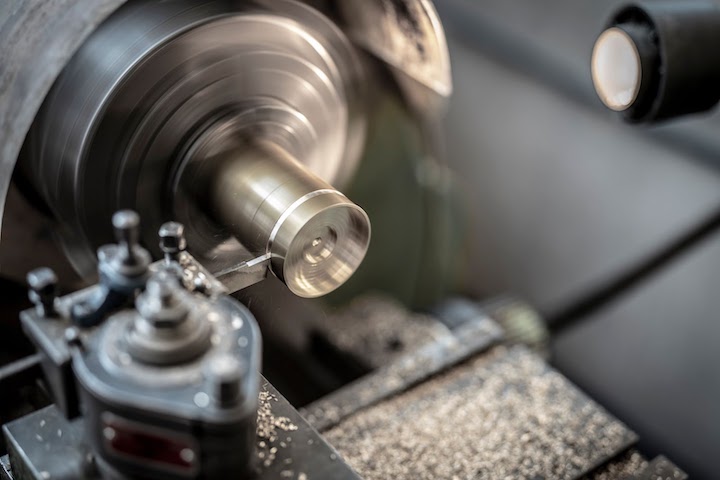
Knurling
Knurling produces a diamond pattern into the outer diameter of a part. This pattern is not produced by cutting, but rather the knurling tool compresses the material into the desired pattern. Knurling is most often used to add grips onto a part.
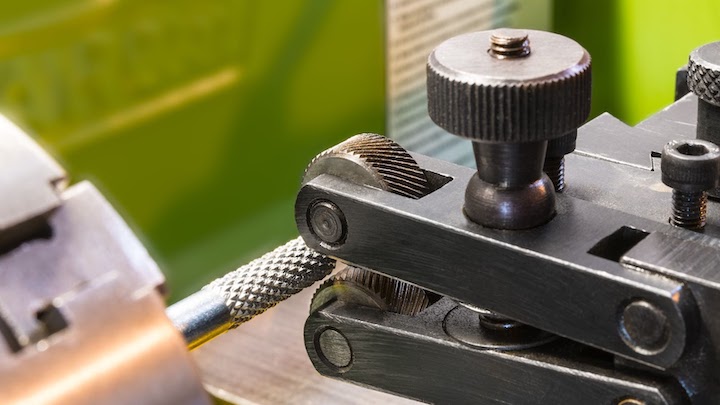
Advantages of CNC Turning
CNC turning has many advantages, some of which are listed below:
- Accuracy: CNC turning can reliably produce extremely precise parts thanks to the automated nature of the system which removes the human element.
- Flexibility: CNC turning is a flexible manufacturing technology that can produce a wide range of complex parts. CNC turning centers take this a step further by combining milling and turning capabilities for ultimate flexibility.
- Safety: All the cutting takes place behind a machine guard, which means that the operator is never near the rotating material which eliminates the risks typical with manual turning machines.
- Faster Results: CNC turning machines can produce parts fast because they follow a precise set of instructions without pause, and different tools can be changed out quickly when required.
How Can Fictiv Help?
Now you have a better understanding of CNC lathe basics and how these machines work. If you need CNC turned parts for your next project, Fictiv offers a range of CNC turning and milling services, within their online CNC service, so create an account and upload your part today! Our in-house experts will provide you with free DFM feedback on your design and manufacturing guidance to ensure that you get the quality parts you need, fast.










